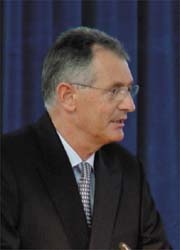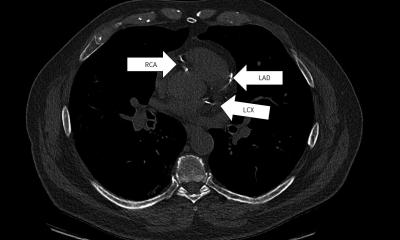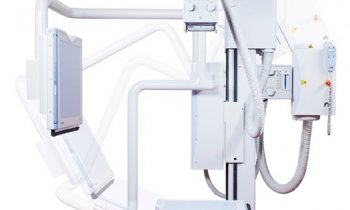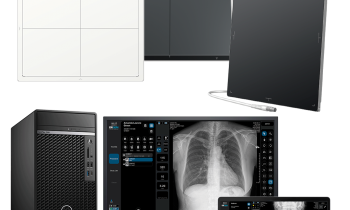German Congress of Radiology
Berlin became the venue for the German Congress of Radiology this May, for the second time. 118 exhibitors showcased products on 4,900 square metres, and the event attracted 7,000 radiologists, and 970 medical-technological radiology assistants (MTRA) to convene simultaneously, leading some to suggest the city will be the future home of the Congress.

In his opening speech, Dr Manfred Lütz typically combined spirit, sarcasm and pensiveness to expose the current widespread ‘health mania’ as a ‘pseudo-religion with totalitarian aspects’. He also wittily decried health policies and politicians’ inability to tackle urgent challenges.
The Scientific Programme’s new offerings and formats focused on radiology and visceral surgery, radiology in intensive medicine, thorax radiology, therapy monitoring, new digital imaging and radiation protection. “The entire range of diagnostic and interventional radiology is being covered. It is the task of the congress president to organise these programme sessions, as well as the complementary events that ensure the congress is a unique and memorable event,’ said 2006 Congress President Dr Reinhard Loose.
1,000 professionals attended seminars on visceral surgery, which featured excellent surgical and radiological contributions, as well as Professor Don Resnick’s X-ray presentation on knee injuries.
Speaking of the future of radiology, Professor Maximilian Reiser, President of the German Roentgen Society, said that, driven by the progress in equipment and computer technology, radiological procedures are on the move and will play an ever increasing role in healthcare.
The development of the first two-tube CT scanner marks another quantum leap in computed tomography, he pointed out. New MRI systems allow whole-body scans with high field strength. Quick and precise diagnoses are critical above all in emergency medicine. Treatment of accident victims can be accelerated considerably with multi-detector CTs. ‘Up to now we had to base our diagnoses on the results of several imaging modalities. Today we can diagnose a patient in a single examination,’ he added.
Whole-body images in MRI, CT and hybrid systems such as PET/CT already significantly contribute to therapy planning for systemic illnesses. In the future, these procedures could well be used to screen for selected diseases such as diabetes. In therapy control they are already well established. For example, a complete tumour staging can be performed with a single examination. MRI provides excellent resolution while PET/CT offers better contrasts due to specific changes in the metabolism. He continued: ‘In the future, radiologist will team up with oncologists and nuclear radiologists to discuss possible therapy monitoring strategies.’ Recently the presidents of the RSNA 2005 (Radiological Society of North America) and the ECR 2006 (European Congress of Radiology) demanded closer interdisciplinary co-operation.
For years, radiologists and cardiologists have discussed the gold standard of cardiac diagnostics. ‘State-of-the-art CT equipment is a valuable alternative to cardiac catheters in the diagnosis of heart defects,’ said Dr Christoph Becker of Grosshardern Hospital, University of Munich.’ A CT is not only less stressful for patients, it is also much cheaper.’ However, the cardiac catheter is by no means obsolete: to treat stenoses in coronary vessels this is still the procedure of choice.
However, about 50% of all catheter exams are performed exclusively for diagnosis. CT is obviously the ‘softer’ method. Today, even though a cardiac catheter is a relatively safe intervention, it still presents considerable physical and psychological stress for a patient.
The 2007 German Congress of Radiology will take place from 16-19 May - again in Berlin - under the new Congress President Prof. Ulrich Mödder MD, of Dusseldorf.
Report: Guido Gebhardt
01.07.2006










